Search Engine Marketing, or SEM, is one of the most effective ways to grow your business and reach new customers.
While it's critical you employ organic strategies to attract traffic over the long-term, sometimes, you can't properly compete on the SERPs without putting money behind it -- and that's where SEM comes into play.
For instance, consider what happens when I type "summer shoes" into Google:
.jpeg)
Zappos clearly has an effective SEO strategy, since its "Summer shoes" page ranks first organically. However, their paid "Summer Shoes" ad, circled above, ranks as the first search result overall.
With 35% of product searches starting on Google, and the average Google search lasting only a minute, it's critical your business's product or service appear at the top of a SERP when a user is searching for it. This isn't always possible organically, particularly when other businesses are paying to ensure their products appear above yours. When this is the case, it's critical you invest in a SEM strategy.
What is Search Engine Marketing (SEM)?
SEM, or search engine marketing, is using paid advertising to ensure that your business's products or services are visible in search engine results pages (SERPs). When a user types in a certain keyword, SEM enables your business to appear as a result for that search query.
To ensure you're able to use SEM to properly advertise your products or services on the SERPs, we've cultivated a list of the best SEM tools, as well as the components of a SEM Ad Auction.
How an Ad Auction Works
Once you're ready to invest in SEM, you'll need to enter into an ad auction -- for our purposes, we'll focus on the ad auction in Google Ads.
In simple terms, every Google ad you see goes through an ad auction before appearing in the SERPs. To enter into an ad auction, you'll first need to identify the keywords you want to bid on, and clarify how much you're willing to spend per click on each of those keywords.
Once Google determines the keywords you bid on are contained within a user's search query, you're entered into the ad auction.
Not every ad will appear on every search related to that keyword. Some keywords don't have enough commercial intent to justify incorporating ads into the page -- for instance, when I type "What is Marketing?" into Google, I don't see any ads appear.
Additionally, even if your keyword is a good fit for an ad, it doesn't mean you'll "win" the bidding. The ad auction considers two main factors when determining which ads to place on the SERP -- your maximum bid, and your ads Quality Score.
A Quality Score is an estimate of the quality of your ads, keywords, and landing pages. You can find your Quality Score, which is reported on a 1-10 scale, in your keywords' "Status" column in your Google Ads account. The more relevant your ad is to a user, as well as how likely a user is to click through and have an enjoyable landing page experience, all factor into your overall Quality Score.
With this in mind, here are some of the factors that should go into your strategy if you want to earn paid ads success:
Keyword Intent
Pay-per-click, or PPC, strategy starts with choosing the right keywords to bid on. That means doing research to determine what keywords to bid on or, in other words, what queries you want your ad to show up for. Start by brainstorming brand terms, terms that describe your product, and even terms that describe your competition.
If you have a small budget, you may only want to bid on keywords that have buying intent. However, if you have a larger budget, you may find that you have room to bid on keywords targeting earlier stages of the buyer's journey or even terms that are loosely related to your products.
Keyword Volume and Competition
If no one's searching for your target keywords, you won't get any results from your ads. At the same time, keywords with extremely high volume attract more competition (and, in some cases, lose relevancy). When doing keyword research, relevant high-volume and low-competition keywords are a sweet spot, but they may not be easy to come by. It then becomes a balancing act between demand (volume) and budget (competition).
Keyword Cost
Ad placement is determined by the bid you specific for the keyword and the quality score Google has given your ad. Higher bids and higher quality ads win the best placement. With this in mind, high competition keywords end up being more expensive. Bidding too low means your ad will not be shown, so you'll want to ensure that you can be competitive based on how much competition is for the keyword.
Account and Campaign Structure
In theory, you could lump all of your keywords together in a single bucket and display one ad for the aggregate lot. But your budget would be eaten up by a handful of high-volume keywords, and your quality score would go down. That's why structuring your Google Ads account properly is so important.
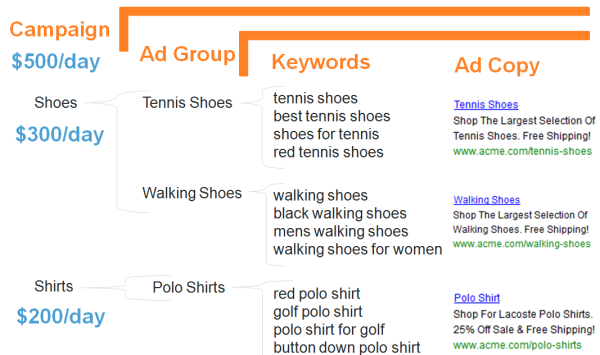
There are several levels for Google Ads campaign organization:
- Ad - The copy that's displayed for the keywords you've chosen.
- Keywords - The queries you're bidding on.
- Ad Group - Sets of like keywords grouped by theme.
- Campaign - Highest level for managing ad groups.
At each level, you'll be able to determine what's working and not working, making you more informed about performance and how your money is being spent.
Copy
At the end of the day, when your keywords are chosen and your account is structured, you still have to write good ads and "earn" the click.
An ad is made up of a few components:
- Title
- Display URL
- Description

Understand exactly what the searchers are looking for with their queries and see if you write a great ad that makes your offer attractive.
Keep in mind also that SEM isn't a set-it-and-forget-it activity. Ongoing PPC management helps you eliminate budget waste, experiment with ads, and optimize keywords you're bidding for to ensure that you're getting the most ROI from your efforts.
Best SEM tools
- HubSpot's Ad Tracking Software
- SEMrush
- Google Trends
- Keywordtool.Io
- Google Ads Keyword Planner
- SpyFu
- WordStream
1. HubSpot's Ad Tracking Software
You're not paying for ads for the fun of it; you're paying for ads because you want to generate leads and drive revenue for your business. The HubSpot Ads tool helps you go beyond traffic and click metrics to analyze exactly how ads are influencing contacts where they are in the buyer's journey. This will help you understand which ads actually work, justify SEM as a channel, and integrate your advertising in with the rest of your marketing efforts.
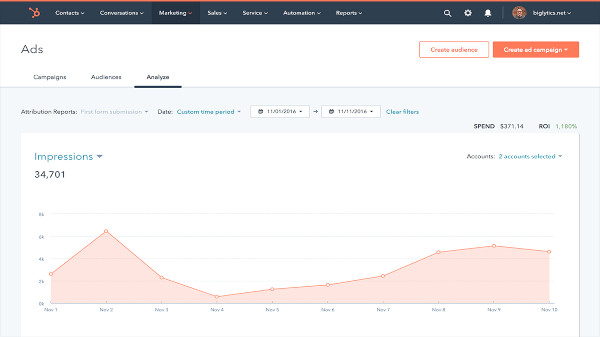
2. SEMrush
SEMRush allows you to conduct extensive keyword research, keyword rank tracking, site audits, traffic analysis, and more. SEMRush is a fantastic tool for finding opportunities to rank for long-tail keywords organically, but additionally, you can use the tool for various SEM efforts. For instance, you can use SEMRush to figure out where your competitors are concentrating their marketing efforts, and analyze their regional presence, to figure out how much money you want to put behind certain keywords.
Additionally, SEMRush enables you to discover your main paid search competitors, figure out which keywords they're bidding on, and study the composition of their ads. This is vital information when you're cultivating your own paid strategy and are unsure how to out-rank other businesses on the SERPs.
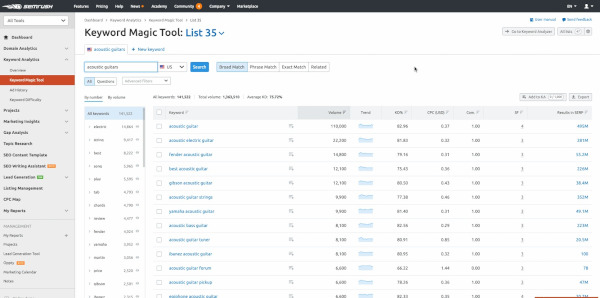
3. Google Trends
Google Trends allows you to track search volume for a particular keyword across a specific region, language, or time frame -- which can enable you to identify which search terms are trending, and which ones aren't. Since you don't want to put money behind a keyword that's decreasing in popularity, this is an incredibly useful tool for your SEM efforts.
Additionally, particularly if you work for an ecommerce business, the ability to gauge interest in your product or service in a certain geographical area is undoubtedly powerful for ensuring you tailor your paid efforts to specific locations, saving you money in the long-run.
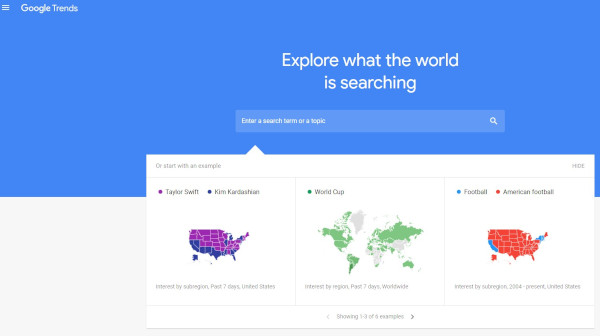
4. Keywordtool.io
One of the most helpful features of Keywordtool.Io is its ability to tap into Google, Bing, YouTube, Amazon, Instagram, Twitter, and the App Store, so that you're able to segment your keyword research through various channels and better target your efforts. Additionally, the tool takes your base keyword and provides you with variations of words and phrases, which allows you to cultivate a more extensive list of possible keywords you might want to include in a paid ad.
Using Google Autocomplete to provide relevant keywords for you, the free version of Keywordtool.Io lets you generate up to 750 long-tail keywords and keyword suggestions for every search term. Plus, you can use the tool to analyze search trends on Google, to ensure your desired keywords are increasing in popularity and will continue to serve you well over the long-term.
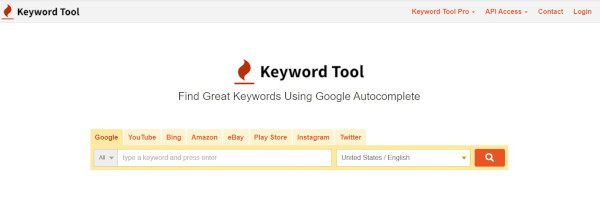
5. Google Ads Keyword Planner
Since Google is likely where you want your ads to appear, it makes sense to consider using Google Ads Keyword Planner to research relevant keywords for your business, and keep track of how searches for certain keywords change over time. The Keyword Planner will help you narrow down a list of possible keywords to ensure you're choosing the most effective ones for your business.
Additionally, Keyword Planner will give you suggested bid estimates for each keyword, so you can determine which keywords work with your advertising budget. Best of all, once you've found your ideal keywords and are ready to launch an ad campaign, you can do it all from within the tool.
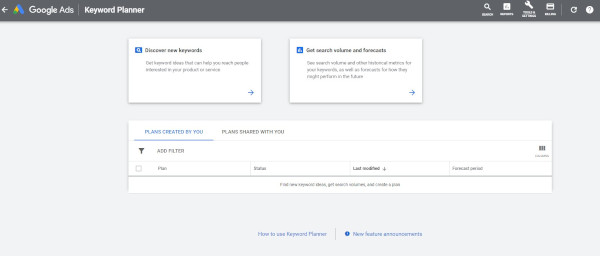
6. SpyFu
Ever wish you could see which keywords your competitors are buying on Google, or check out which ad tests they've run? With SpyFu, you're able to do just that -- simply search a domain, and you'll see every keyword that business has bought on Adwords, every organic keyword for which they've ranked, and every ad variation they've had in the last 12 years. Plus, you can monitor your own paid and SEO rankings on Google, Bing, and Yahoo.
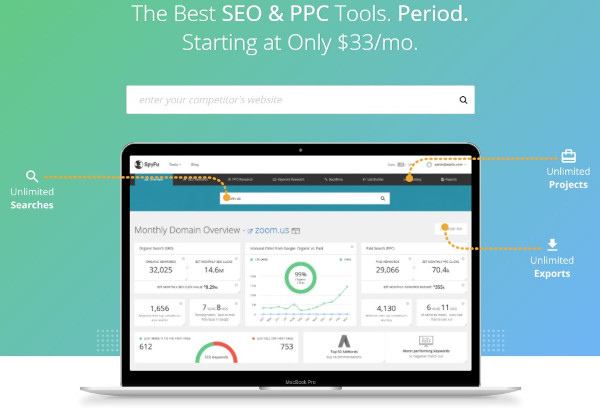
7. WordStream
WordStream is a advertising management solution that can help you research, measure, and optimize your ads for performance. You get access to advanced reporting features for data analysis and tools for creating great ads. In addition, WordStream has alerts and workflow tools to help you make decisions about your campaigns.
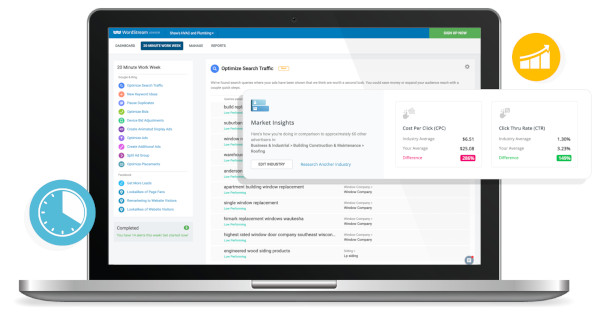
With the above tools and a killer strategy, SEM can be a great strategy for lead generation. There's no reason why you shouldn't start your PPC campaign today.
Editor's note: This post was originally published in April 2019 and has been updated for comprehensiveness.
from Marketing https://ift.tt/2TVCLqT
via
No comments:
Post a Comment